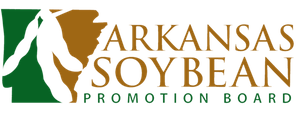Global Oilseed Producers Address Market Access
Global Oilseed Producers Address Market Access
Representatives from around the globe discuss challenges and opportunities
ST. LOUIS (June 23, 2016) – Oilseed producers from around the globe face a variety of challenges as markets and end-user demands continue to evolve. To support a profitable and sustainable soybean industry, U.S. soybean farmers joined other global oilseed producers in an effort to understand opportunities and challenges in the marketplace, including new breeding technologies, sustainability, social pressures and customer trends.
The gathering took place this week in Berlin as part of the International Oilseed Producers Dialogue (IOPD). Representatives from the United Soybean Board (USB), American Soybean Association (ASA) and the U.S. Soybean Export Council (USSEC) all participated in these discussions.
“Forming partnerships with other oilseed producers allows us to look at the big picture of the global oilseed business,” says John Motter, USB vice chair and soybean farmer from Jenera, Ohio. “Sharing customer trends and challenges allows U.S. soybean farmers to better anticipate where demand is coming from and what our customers will need next. This is very relevant for the U.S. soybean industry as we continue to focus on end-user demands. Whether end users want an improved protein profile, a more functional soybean oil or a more sustainably-produced product, we’re focused on ensuring they have it.”
One issue that was at the forefront of the dialogue was the pressures mounting on the way farmers in other countries operate. The group heard from representatives from several countries experiencing changes in the way they are allowed to produce oilseeds and other crops.
“It’s important for us to see what is happening globally with farmers and the limitations being put on farming practices,” says Jim Miller, USSEC vice chair and soybean farmer from Belden, Nebraska. “If we understand where these concerns are coming from, we can proactively market U.S. soy’s sustainability story and help alleviate any concerns on our production practices.”
Another issue addressed this week was Germany’s position on biotechnology and GMO labeling. The lack of biotechnology trait acceptance is a threat to U.S. soybean farmers’ bottom lines.
“The available supply of soybeans with enhanced genetics continues to grow as seed companies provide options to the market and farmers work hard to grow crops, so now we need to ensure there is a clear path to demand,” says Richard Wilkins, ASA president and soybean farmer from Greenwood, Delaware.
Oilseed producers formed IOPD under the belief that while producers of oilseeds may be competitors in the marketplace, they also share many common interests and objectives.
IOPD provides a foundation for discussions about how to come together to address global challenges, such as worldwide food security.
While in the European Union, the U.S. soybean organizations also took the opportunity to meet with the International Soybean Growers Alliance (ISGA). This coalition of international soybean farmers helps elevate the need for timely biotech approvals in the European Union, China, and other markets.
About the United Soybean Board (USB)
USB’s 70 farmer-directors work on behalf of all U.S. soybean farmers to achieve maximum value for their soy checkoff investments. These volunteers invest and leverage checkoff funds in programs and partnerships to drive soybean innovation beyond the bushel and increase preference for U.S. soy. That preference is based on U.S. soybean meal and oil quality and the sustainability of U.S. soybean farmers. As stipulated in the federal Soybean Promotion, Research and Consumer Information Act, the USDA Agricultural Marketing Service has oversight responsibilities for USB and the soy checkoff. For more information on USB, visit www.unitedsoybean.org.
About the U.S. Soybean Export Council (USSEC)
USSEC aims to maximize the use of U.S. soy internationally by meeting the needs of global customers that use U.S. soy in human food and feed for poultry, livestock and fish. The organization uses a global network of stakeholder partnerships, including soybean farmers, exporters, agribusinesses, agricultural organizations, researchers and government agencies, to accomplish that mission. For more information on USSEC, visit www.ussec.org.
About the American Soybean Association (ASA)
ASA represents all U.S. soybean farmers on domestic and international issues of importance to the soybean industry. ASA’s advocacy efforts are made possible through voluntary farmer membership by farmers in 30 states where soybeans are grown. For more information on ASA, visit www.soygrowers.com.
###
